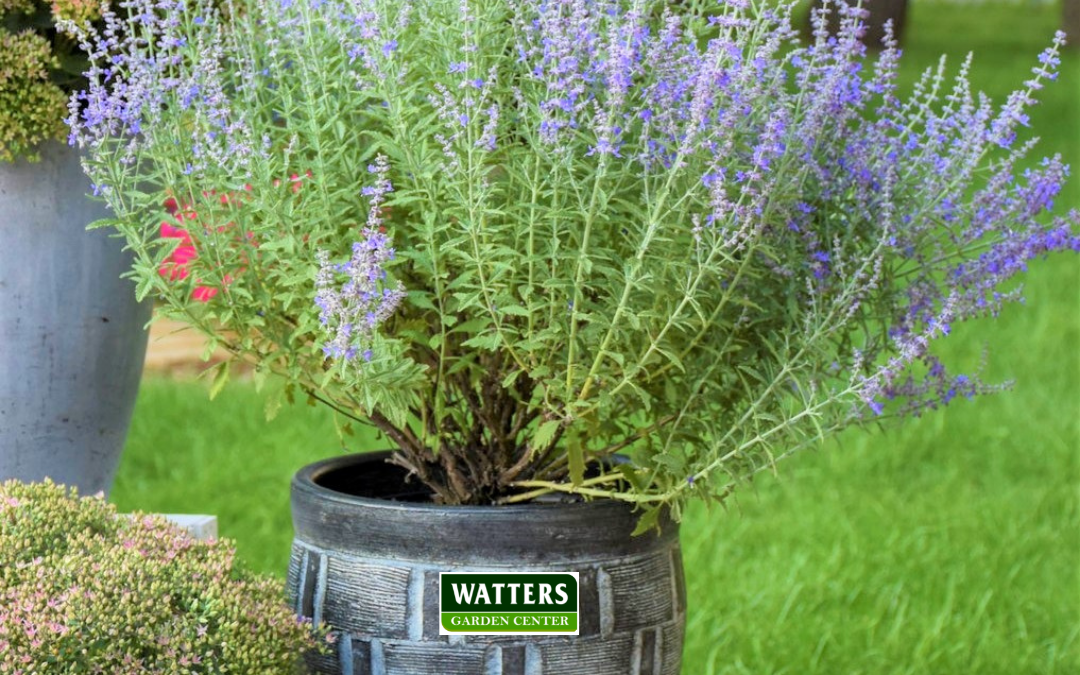Nine big plants that wow in big pots
By Lisa Watters-Lain, Arizona’s garden gal
The easiest gardening is in containers. Tall plants turn ordinary container gardens into living art, adding height, variety, and drama. My designer rule for stylish containers is “thriller, spiller, then fillers.”
Combine a tall, “thrilling” focal point with plants spilling over the sides of your container to soften the edges. Filler plants bridge the space between. Very little potting soil should be visible when your design is complete. Plants will be touching foliage-to-foliage.
Start with a tall “thrilling” plant, and the rest of your job is easy. Here is my go-to list of tall plants that thrive in container gardens.
Insider Tips: The larger your container, the easier it is to grow and maintain. The more potting soil your container holds, the longer these tall beauties last for years of enjoyment.
Agave thrives in a shallow clay pot. Locals refer to this native wonder as Arizona’s century plant. Rumored to shoot up a twelve-foot flower from its heart once every 100 years. I find they bloom every 10-15 years when cared for properly. They prefer a gritty, well-drained cactus mix.
Alberta Spruce, Picea glauca, is a perfect front yard container and raised bed tree. Lush growth means it’s also an excellent screen plant that won’t overgrow spaces. Experiment with topiary spirals or poodle specimens on entries and patios without room to plant. This makes a beautiful choice for woodland gardens or behind water features.
Arborvitae, Thuja, as the centerpiece of a container garden is elegant, classy, and low maintenance. Choose one that holds its shape nicely without a lot of pruning. A good option is Emerald Green arborvitae, a semi-dwarf cultivar that grows in a narrow pyramid to around seven to 12 feet tall. Plant in a large pot with Watters Potting Soil and it will thrive for many years.
Boxwood, Buxus, are often grouped together in foundation plantings or to form low hedges. Dwarf boxwoods are famous for their use in formal cottage or English-style landscapes. They respond well to pruning, making them popular as topiary and bonsai plants. The fun of using this plant is trimming it to be anything you want.
Lavender is virtually synonymous with fragrance. The best-known aromatic herb is a potpourri staple; its flowers and leaves, especially after they’re dried, have a fabulous smell. Lavender thus bridges the gap between plants with aromatic foliage and those with strongly scented flowers.
Sage, Salvia, is the longest blooming sage, signaling spring with continual flowers broadcasting right through autumn. Hummingbirds and gardeners fall for this knee-high bloomer that deserves a prominent location in the garden’s hotter spots. Javelina- and deer-proof.
Roses are surprisingly easy to grow in our dry mountain air. They love it here. They thrive in larger containers at least 18 inches wide. Try Easy Elegant, Knockout, and Carpet roses for continual fragrance every month to the growing season. Feed every two weeks with Watters Flower Power of even larger blooms from your bush.
Rosemary quickly forms a hedge of aromatic evergreen foliage. Profuse clear blue flowers add a charming effect. Leaves can be used as a flavorful herb in cooking. Prunes well but is equally excellent in its natural form without pruning.
Yucca is a magnificent southwestern native producing four-foot wands of bright trumpet flowers irresistible to hummingbirds. Blooms tower above the mound with sword-shaped foliage. A must-have for sunny waterwise gardens used in a showy evergreen planting.
Until next issue, I’ll be helping gardeners choose thrilling plants for their large pots here at Watters Garden Center.
Lisa Watters-Lain can be found at Watters Garden Center, 1815 Iron Springs Road, or contacted through her website at WattersGardenCenter.com or Top10Plants.com

